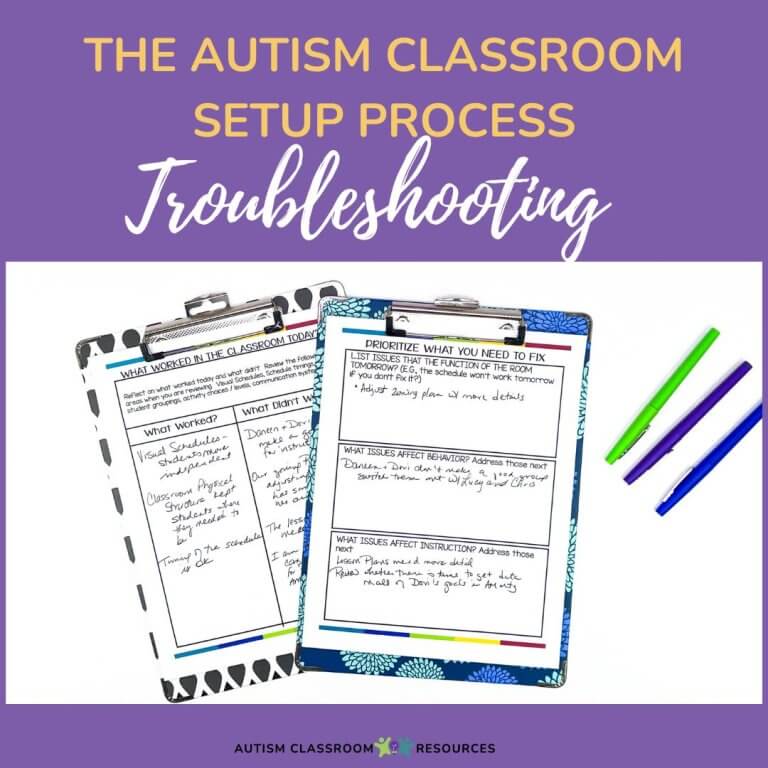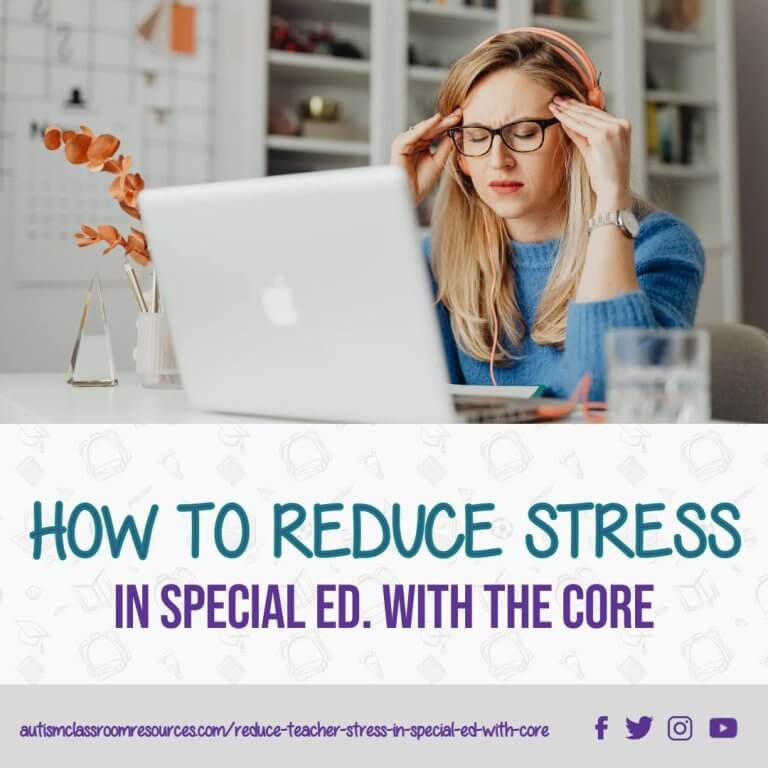The goal of setting up any classroom, but particularly a classroom for students with ASD is to have high levels of active engagement in challenging learning material. At the heart of an effective educational program for students on the spectrum is a highly organized environment that provides supports for the student based on his or her individual needs. Without a highly organized environment that is planned around the student, evidence-based strategies cannot be implemented. An organized classroom is one in which behavior is managed and attention to the important elements of learning can occur. This means that the first step in establishing a program is to assure that you know your students.
It is important to make sure that everyone on the team has a good working knowledge of the students they serve. This includes special ed. teachers, general ed. teachers, specials teachers, related service providers, and paraprofessionals among others. I am a strong proponent of knowing everything you can about a student before he or she walks into the building. Only by knowing the student can you properly prepare to implement his educational program. So, one of the most important steps in establishing the classroom program is to review the student’s records including, but not limited to, the Individual Educational Program (IEP).
However, it is important that the process doesn’t stop there. The IEP includes some information about functioning and skills, but it usually doesn’t give you the whole picture. Frequently IEPs are written so that they highlight the skills that are strengths and weaknesses around specific goals rather than giving a holistic view of the student as a person. So, it is important to review the child’s educational records as much as possible. At the very least, read the last evaluation as well as the last 2 IEPs if possible. This is a step that is important whether the student is primarily in a self-contained classroom or a general education classroom, or a combination of the two. On A Special Sparkle, Lisa did a great job in this post of how to review information from assessments. In addition, you would want to make sure you know about the following information:
wheelchair use, need for boundaries)
need a speech-generating device?, Does he have a PECS book?)
there social skills goals that need to be addressed at specific times in the
general education classroom?)
scheduled into his day?)
behavior plan that needs to be followed? Are there questions you have
about how it should be implemented?)
picture schedule, a written schedule, a schedule on an iPod or an object
schedule?)
needs frequent breaks)
Getting to know your students shouldn’t stop at reviewing the file, though, and planning with this information is important to get the year off to a successful start. If possible, it makes sense to talk about and review the programs as a team together. I know that is not always a possibility, but all the team members may have information to share, if the student isn’t new to the building, that can be useful to the team as a whole.
In addition to making sure that you have all the needed equipment, curricula, and materials to implement a student’s IEP, it is also important to use the information about the student to plan the program. Clearly, if you had a self-contained room, your classroom structure and routine would look much different than a general education classroom. Similarly, your classroom (general ed. or self-contained) is going to look different depending on the needs of your students. In the next post I will talk about a tool to determine how all the students’ plans will be implemented.
Until next time….








